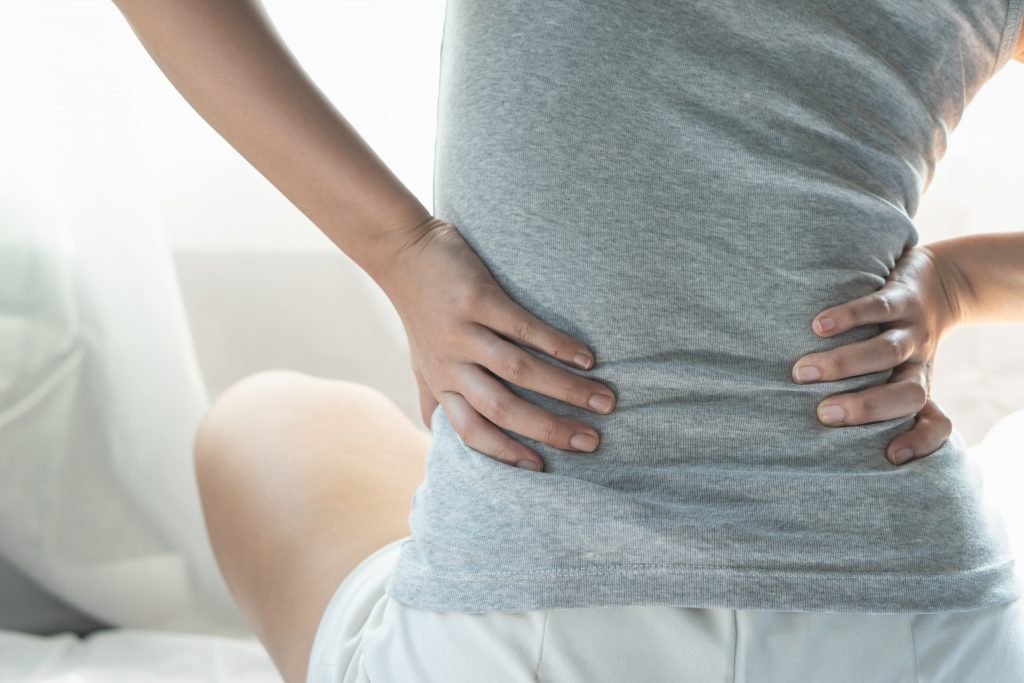Can Your Psoas Muscle Cause Back Pain?

Dealing with back pain is never an enjoyable experience. Ever minor back pain can create a large number of problems in your life or keep you from doing the things you once enjoyed, and major or chronic back pain can be downright debilitating. There is a wide variety of muscle, joint, bone, and other health issues that can lead to back pain, but today’s focus is on the psoas muscle and the role it can play.
What is the Psoas Muscle?
Located on the lower part of your spine and pelvis, the iliopsoas muscle group is responsible for helping you move and flex your hips. This group of muscles also works to help keep your hips and lower back stabilized when performing various activities and even when standing up and sitting down.
Unfortunately, the position of these muscles means that they can also be a major source of lower back pain. The biggest culprit is the psoas major muscle, which runs from your thoracic level 12 vertebrae down through your pelvis to your femur. This muscle is vital in flexing your hip and also aids in flexing the lower, lumbar portion of your spine.
The Link between the Psoas Muscle and Lower Back Pain
Most commonly, irritation of the psoas major muscle leads to hip and abdominal pain. However, it can also be a major source of back pain as it can pull on your lower back when the muscle is short and tightened. Essentially, this muscle can pull the lumbar portion of your spine forward causing a more pronounced curvature of your lower spine.
Everyone has a slight curve of their lower spine. However, this increased curve caused by the psoas muscle puts more pressure on the bones, muscles, and joints in your lower back, which can result in pain. In addition, a shortened psoas muscle may also pull your pelvis out of alignment and similarly lead to pain in the lower back and pelvis.
Managing and Treating Psoas-Related Back Pain
Back pain management and treatment start with diagnosing the specific cause of the problem. Unfortunately, the psoas muscle’s vital place on your lower back and pelvis means that it can often pull other areas out of alignment as well. Essentially, any muscle dysfunction can cause your body to compensate and thus lead to other alignment issues and mechanical changes in the body. As a result, it is necessary to not only deal with the original cause of the psoas muscle dysfunction but also any and all other changes that may have resulted from it.
Before self-diagnosing yourself, however, it may be a good idea to start with someone that specializes in back pain management. That way, you are able to get a clear understanding of what is causing the discomfort. For example, what you would do to manage a psoas issue may be completely different than how you would handle a disc alignment issue. Not to mention the additional damage you risk causing by trying to self-treat a psoas issue when it is actually a herniated disk. In addition, if it is psoas-related, it is likely that other muscles or joints need attention as well. A specialist may be able to help support you as a whole instead of one part at a time.
Psoas Releas and Exercises
There are professionals that are trained for what is called a Psoas-release, which is when pressure is applied to certain parts of the psoas and has been reported to relieve some of the pain caused by the psoas. However, this can be very uncomfortable and expensive. Before considering a psoas release, make sure that you have done your research about who to go to and ensure that they have the experience to diagnose psoas issues, not just completing a release.
The number one thing you can do on your own and while at home is stretching. Many hip opening stretches can be beneficial at extending your psoas muscle. One of the most common exercises is by kneeling in a lung position and rocking your body forward while maintaining your back leg position.
Many people who have psoas issues also tend to have weaker glutes or weaker lower back muscles. Because of this weakness, the strength of the psoas can pull the muscles more. By building your glute and lower back muscles, you can help support and keep your psoas in place. Common strength building exercises for the glutes and lower back is a glute bridge. This is where you lie on your back with your knees in the air and your feet close to your glutes. While keeping your head and shoulders on the ground, you raise your pelvis as high as you can and then lower it back down again.
Back pain can be caused by a huge number of different issues. Whether it be the psoas muscle or something else, it is vital that you consult with a physician in order to understand the specific underlying issues that are causing you to experience pain. Only through this will you be able to come up with a proper plan to help you manage, treat or eliminate your back pain altogether.
